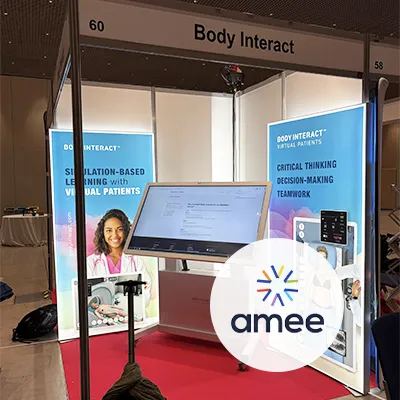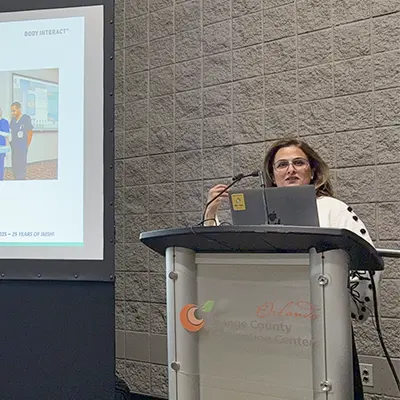Virtual Patients as Preclinical Experiences for Meaningful Disciplinary Learning
Over the past few months, the Body Interact Team has been working diligently to provide its users with dynamic and engaging educational content. Webinars have been a key part of these efforts, and the latest session continues this tradition of high-quality learning experiences.

This post introduces the insightful presentation by Dr. Araceli Hambleton Fuentes, a full-time professor at the School of Medicine and Health Sciences at Tecnológico de Monterrey (ITESM), Monterrey Campus, Mexico.
Dr. Hambleton’s webinar, titled “Virtual Patients as Preclinical Experiences for Meaningful Disciplinary Learning” (original title: Pacientes Virtuales como Experiencias Preclínicas para el Aprendizaje Disciplinar Significativo), follows her earlier session, “Virtual Patients in Competency-Based Educational Models.”
- Present an educational innovation using virtual patients to foster medical competencies.
- Analyze the impact of virtual patient interaction on the development of cognitive and disciplinary skills.
Setting the Context: The Challenge of Preclinical Teaching
To establish the foundation for her presentation, Dr. Hambleton reflected on the challenges faced by clinical educators, particularly the lack of direct patient contact in preclinical education. She introduced the concept of meaningful learning, inspired by educational theorist David Ausubel, which emphasizes learning that is:
- Deeply understood (not merely memorized)
- Connected to prior knowledge and experience
- Relevant to real-world contexts and goals
- Retained over time and transferable to new situations
While bedside learning is ideal, it is often inaccessible during the early stages of medical education. To bridge this gap, educators must design engaging and relevant learning experiences—a challenge that digital platforms like Body Interact – Virtual Patient Simulation – aim to meet.
Integration of Body Interact into the Curriculum
To address these teaching challenges, Dr. Hambleton introduced Body Interact virtual patients into the medical curriculum at Tecnológico de Monterrey. She highlighted several advantages of using digital tools like Body Interact:
- Accessibility and flexibility
- Personalization and realism
- Student engagement
- Immediate feedback
- Data-driven performance tracking
- Development of clinical reasoning
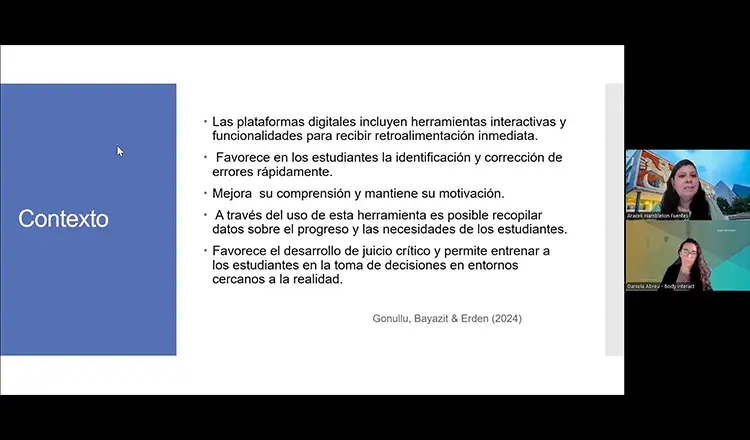
The PASIVI Model: A Structured Implementation Approach
To standardize the integration of virtual patients, Dr. Hambleton and her colleague Dr. Beltran-Sanchez developed the PASIVI Model, which outlines a clear methodology for implementing Body Interact:
- Define the learning objective
- Determine human and technological requirements
- Select and program appropriate Body Interact scenarios
- Provide feedback using collected data (synchronously, in-person, or virtually)
- Assess learning outcomes
- Build a performance database focused on individual competencies
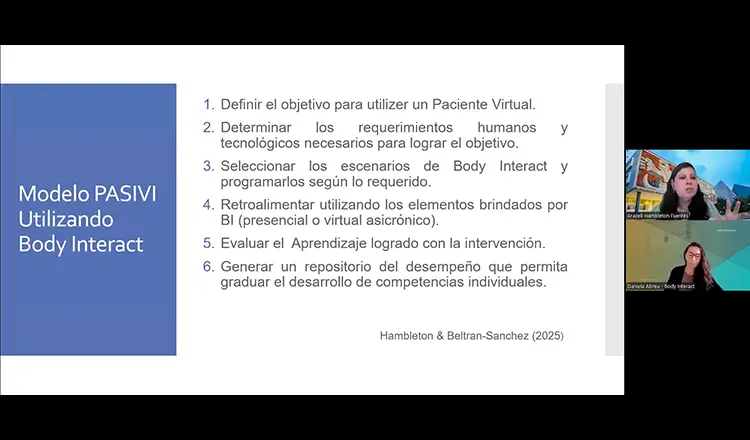
This model proposes a specific methodology to achieve its goals, for which Dra. Araceli provided an example of how it was conducted in the curricular unit of Physiopathology of the Respiratory System:
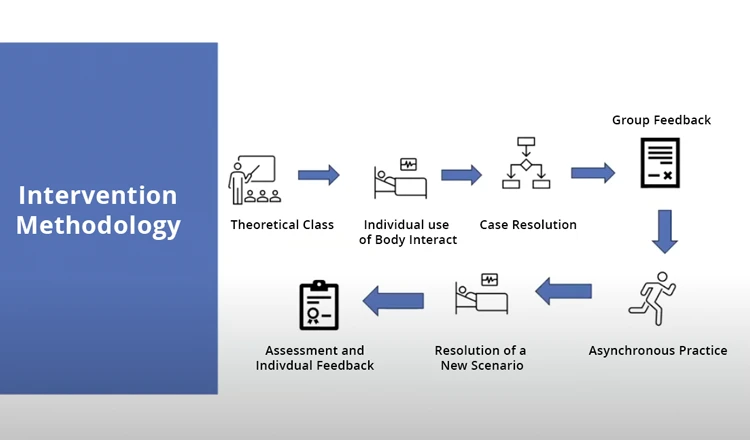
Key Takeaways
To sum up, the speaker reflected that a meaningful learning experience becomes authentic when the student:
Solves a problem
Has a specific role in solving that problem
The problem itself can have multiple solutions, fostering divergent thinking
Has clear instructions on what is expected of the student
Body Interact enables educators to create such meaningful and authentic experiences for learners.
If you weren’t able to attend the webinar, watch the full recording here:



